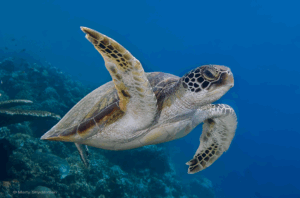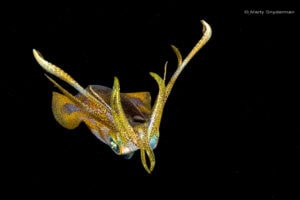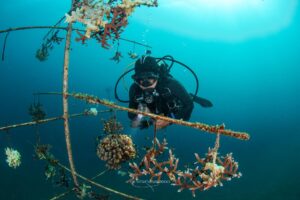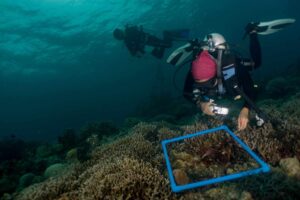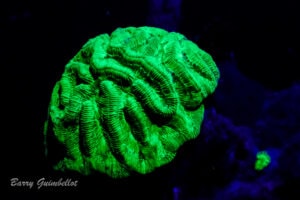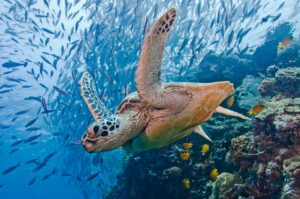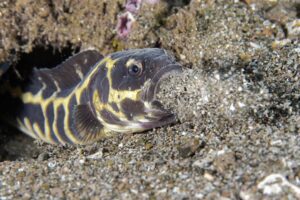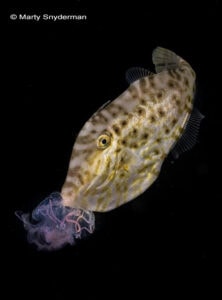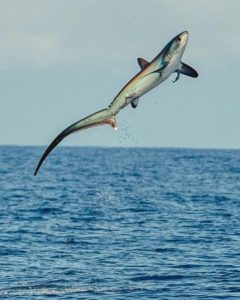The Visayas are a group of islands in the center of the Philippines archipelago. The islands primarily surround the Visayan Sea, a continuation of the Sulu Sea to the northeast. Its unique location is a gateway between the Sulu Sea and the Pacific Ocean, creating a migratory highway between the two.
Ocean water, rich in nutrients, passes through the Visayan Sea and the nutrients settle on the channels between the islands. The channels between the islands are typically 200-300 meters deep, and the topography can be plateau, sandy slopes, sloping reefs, walls and interesting rock formations. The nutrients and volcanic rock create and maintain incredibly vivid reefs with an array of soft and hard corals.
The marine life in the Visayas is extremely varied, from the smallest critters, including frogfish, pygmy seahorse and nudibranchs, to massive whale sharks.
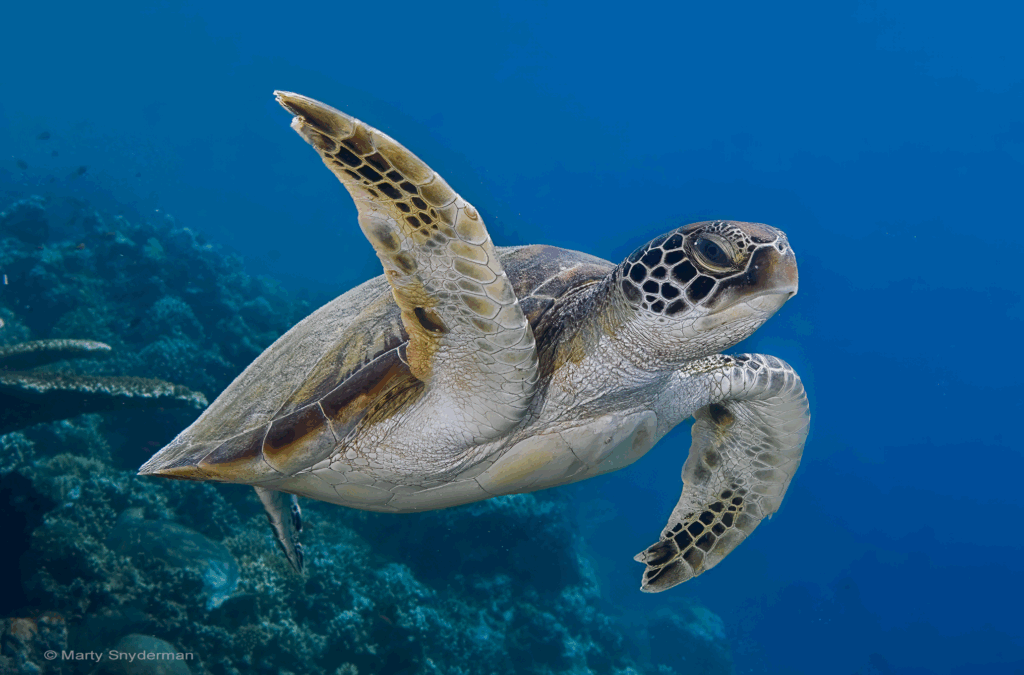
Image by Marty Snyderman
The Visayas offer incredible diving, and, if you have plenty of time, you can move between various islands, staying and diving in each. If you want to experience diving in the Visayas in a shorter period of time, the best way to explore a different site every day is to dive off a liveaboard.
Atlantis Infiniti week long Visayas South route takes you through the magic.
The list of marine life is vast, however, at minimum divers can expect to spot turtles, whitetip and blacktip reef sharks, schooling barracuda and trevally, frogfish, ghost pipefish, pygmy and thorny seahorses, and many different species of nudibranch.
The adventure kicks off with the rich marine life of Bohol Island, moving onto diving with the whale sharks of Oslob and diving Sumilon Island’s exquisite coral gardens. The next two days are spent exploring Siquijor Island and Apo Island, before returning to Dauin, where we dove the last day.
Bohol is also known to be some of the most spectacular dive sites in the Philippines. We start with Pamilacan Island, with steep sloping reefs, with large hard and soft corals. The island has a marine sanctuary where dolphins and whales can be sighted, It is also known for its big barracudas and manta rays.
On the second day we enjoyed Cabilao, with its shallow topped reefs and nice drop-offs, the island offers an incredible number of critters in the shallows which are a delight to see. However, what really differentiates it from others nearby are the pristine hard corals around the southern coast. The reef is home to many species such as Scorpion fish, Tunas, Jackfish, Barracudas, Frogfish, and Nudibranchs.

Image by Marty Snyderman
Oslob in Southern Cebu offers an opportunity to dive with whale sharks (guaranteed), the rest of the day we dive in the tranquil Sumilon Island, surrounded by crystal clear waters and pristine white sandy beaches. Look out for… exquisite coral gardens and drop-offs. ‘Might sees’ in this area include manta rays and stingrays, barracudas, sea turtles and snakes and very occasionally whale sharks.
Apo means “grandchild” in Tagalog, Philippines’ national language. This small island is less than a square kilometre in size, and is surrounded by the Philippines’ first community-organized marine reserve, established in the late 1980s. It is officially known as Apo Island Marine Sanctuary. Apo Island is home to nearly 1,000 people who reside there without electricity or running water; the waters hugging its shores boast 650 documented species of fish and over 400 species of corals. The biodiversity is simply amazing. This is why Apo Island scuba diving offers an incredible opportunity to see the majority of the 450 coral species indigenous to the archipelago. The reef is healthy and colourful, with a variety of both hard and soft corals. Even while snorkeling, we spot jackfish, barracuda, banded sea snakes, hawksbill and green turtles.

Image by Marty Snyderman
Dauin Coast off Negros Island is a critter heaven and home to some amazing muck diving. Every dive is like a hunt and you never know what crazy little critters you will find! You will see many octopus, mantis shrimp (if you’re lucky, with eggs!), jawfish with eggs in the mouth, mandarin fish mating and more! Night dives here are fantastic with sightings of octopus, flamboyant cuttlefish, squids, crabs, flatworms and more!

Image by Marty Snyderman
Join us on an incredible adventure in 2025 and enjoy 20% off, availability and rates are here.


